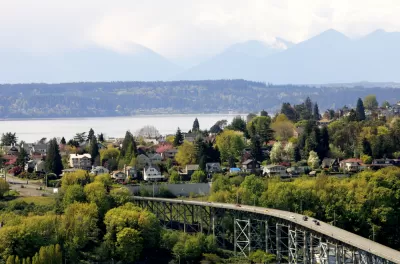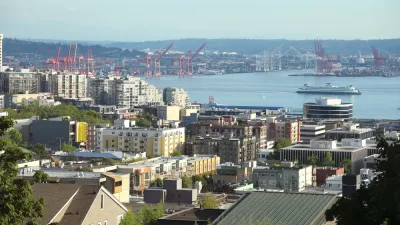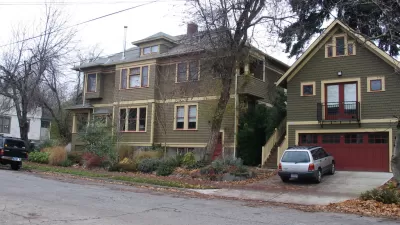Reform of the Washington State Environmental Policy Act (SEPA) is underway at the local level after a new state bill offered "safe harbor" under the law for a menu of land use and development reforms.

Natalie Bicknell reports on the local response in Seattle to the passage of House Bill 1923, state level legislation passed earlier this year that "provides cities with a menu of options for increasing their housing density and then provides 'safe harbor,' or protections from SEPA lawsuits, for actions taken from that menu."
In response to the breathing room provided by the new state law, Seattle councilmembers Mike O'Brien and Abel Pacheco have introduced Council Bill 119600, "which would align Seattle’s environmental review process with recent changes state level changes made to SEPA," according to Bicknell.
Bicknell lists some of the important changes proposed by Council Bill 119600:
- Align City code with new state law House Bill 1923 that exempts some City Land Use Code changes from SEPA appeals;
- Limit Hearing Examiner SEPA appeal hearings to 120 days, with an option to extend to 150 days if all parties agree;
- Clarify that additional and voluntary subjects covered in an Environmental Impact Statement are not subject to appeal;
- Update SEPA thresholds for Urban Villages to exempt projects with less than 200 units and 12,000 square feet; and
- Allow the Seattle Department of Construction and Inspections to create a SEPA Handbook that provides guidelines for consistent analysis.
Bicknell speculates that the bill is likely to pass by October, which is when "things will really become interesting."
An article by Dan Bertolet, published in November 2017, details the obstructionist effect of SEPA.
FULL STORY: Seattle Advances SEPA Reform with Equity and Affordability in Mind

Alabama: Trump Terminates Settlements for Black Communities Harmed By Raw Sewage
Trump deemed the landmark civil rights agreement “illegal DEI and environmental justice policy.”

Planetizen Federal Action Tracker
A weekly monitor of how Trump’s orders and actions are impacting planners and planning in America.

The 120 Year Old Tiny Home Villages That Sheltered San Francisco’s Earthquake Refugees
More than a century ago, San Francisco mobilized to house thousands of residents displaced by the 1906 earthquake. Could their strategy offer a model for the present?

In Both Crashes and Crime, Public Transportation is Far Safer than Driving
Contrary to popular assumptions, public transportation has far lower crash and crime rates than automobile travel. For safer communities, improve and encourage transit travel.

Report: Zoning Reforms Should Complement Nashville’s Ambitious Transit Plan
Without reform, restrictive zoning codes will limit the impact of the city’s planned transit expansion and could exclude some of the residents who depend on transit the most.

Judge Orders Release of Frozen IRA, IIJA Funding
The decision is a victory for environmental groups who charged that freezing funds for critical infrastructure and disaster response programs caused “real and irreparable harm” to communities.
Urban Design for Planners 1: Software Tools
This six-course series explores essential urban design concepts using open source software and equips planners with the tools they need to participate fully in the urban design process.
Planning for Universal Design
Learn the tools for implementing Universal Design in planning regulations.
Clanton & Associates, Inc.
Jessamine County Fiscal Court
Institute for Housing and Urban Development Studies (IHS)
City of Grandview
Harvard GSD Executive Education
Toledo-Lucas County Plan Commissions
Salt Lake City
NYU Wagner Graduate School of Public Service





























